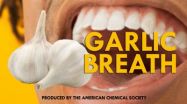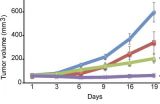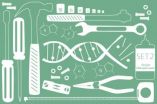(Press-News.org) We've all been on the receiving end of an angry glare, whether from a teacher, parent, boss, or significant other. These angry expressions seem to boost the effectiveness of threats without actual aggression, according to research published in Psychological Science, a journal of the Association for Psychological Science.
The research findings show that angry expressions lend additional weight to a negotiator's threat to walk away from the table if his or her demands aren't met, leading the other party in the negotiation to offer more money than they otherwise would have.
"Our facial expressions are relatively more difficult to control than our words," says psychological scientist Lawrence Ian Reed, first author on the research. Because they're harder to control, these expressions serve as a believable outward indication of a person's motivations.
"In this way, facial expressions can carry the weight of our words," says Reed.
Each party involved in a negotiation goes in with the aim of getting exactly what they want, but they also have a vested interest in making sure that their demands are seen as credible so that the talks don't fall apart.
Reed and colleagues Peter DeScioli of Stony Brook University and Steven Pinker of Harvard University hypothesized that angry expressions may lend this credibility, helping to back up negotiators' threats to walk away from the table if they don't receive what they want. But, they hypothesized, expressions of anger wouldn't lend additional credibility to demands that already seem fair (e.g., a 50-50 split).
In a study conducted online, 870 participants were told that they would be playing a negotiation game in which some participants, acting as the "proposer," would decide how to split a sum of $1.00 with another participant, the "responder." Each person would receive the specified sum if the responder accepted the split that was offered, but neither person would receive any money if the responder rejected the split.
Before making their offers, each proposer was shown a threat that supposedly came from the responder. In reality, the responder was played by the same female actor, who was instructed to create specific facial expressions in the video clips. One clip showed her making a neutral expression, while another showed her making an angry expression.
The clips were accompanied by a written demand for either an equal cut of 50% or a larger cut of 70%, which would leave only 30% for the proposer.
After they saw the threat, the proposers were asked to state their offer.
The data revealed that the responder's facial expression did have an impact on the amount offered by the proposer, but only when the responder demanded the larger share.
That is, proposers offered more money if the responder showed an angry expression compared to when they showed a neutral expression, but only when the responder demanded 70% of the take.
Facial expression had no influence on proposers' offers when the responder demanded an equal share, presumably because the demand was already viewed as credible.
Interestingly, proposers offered greater amounts in response to angry facial expressions compared to neutral expressions even when they were told that they belonged to a "typical responder," rather than their specific partner.
The researchers were surprised at how robust the effect was, despite the experimental setting:
"We created our anger expression by filming a deliberately posed expression rather than a spontaneously emitted one," says Reed. "We were surprised to find that the expression had an effect even though it was literally faked."
The findings, Reed argues, have broad relevance to all kinds of negotiations:
"The idea that bargaining offers are mediated in part by emotions and motivations speaks towards the importance of emotions and their expression in any bargaining situation. These include not only the division of resources, but also in buying a car or house, and/or disciplining students or children."
INFORMATION:
For more information about this study, please contact: Lawrence Ian Reed at lawrenceianreed@fas.harvard.edu.
The article abstract is available online: http://pss.sagepub.com/content/early/2014/06/03/0956797614531027.abstract
The APS journal Psychological Science is the highest ranked empirical journal in psychology. For a copy of the article "The Commitment Function of Angry Facial Expressions" and access to other Psychological Science research findings, please contact Anna Mikulak at 202-293-9300 or amikulak@psychologicalscience.org.
Angry faces back up verbal threats, making them seem more credible
2014-06-09
ELSE PRESS RELEASES FROM THIS DATE:
Distance from a conflict may promote wiser reasoning
2014-06-09
If you're faced with a troubling personal dilemma, such as a cheating spouse, you may think about it more wisely if you consider it as an outside observer would, according to research forthcoming in Psychological Science, a journal of the Association for Psychological Science.
"These results are the first to demonstrate a new type of bias within ourselves when it comes to wise reasoning about an interpersonal relationship dilemma," says psychology researcher and study author Igor Grossmann of the University of Waterloo in Canada. "We call the bias Solomon's Paradox, ...
Penn Medicine at the International Congress of Parkinson's Disease and Movement Disorders
2014-06-09
Penn Medicine researchers will be among the featured presenters at the 18th International Congress of Parkinson's Disease and Movement Disorders in Stockholm, Sweden, from Sunday, June 8 to Thursday, June 12, 2014.
Matthew Stern, MD, director of the Parkinson's Disease and Movement Disorders Center in the Department of Neurology and current president of the International Parkinson's Disease and Movement Disorders Society, will chair a plenary session entitled "New insights into the pathology, progression, and heterogeneity of Parkinson's disease."
John Q. Trojanowski, ...
What causes garlic breath? (video)
2014-06-09
WASHINGTON, June 9, 2014 — Garlic is good for your body, great for your taste buds, but terrible for your breath. In the American Chemical Society's latest Reactions video, we look at the plant beloved by chefs and feared by vampires. Once again we teamed up with the Compound Interest blog to break down the chemistry of garlic, and how to beat the bad breath it causes. The video is available at http://youtu.be/cAWLQ_4DphI.
INFORMATION:
Subscribe to the series at Reactions YouTube, and follow us on Twitter @ACSreactions to be the first to see our latest videos.
The ...
Health Affairs asks: Where can we find savings in health care?
2014-06-09
Reducing Maternal Mortality In Zambia and Uganda. Margaret E. Kruk of Columbia University and co-authors assessed the effectiveness of Saving Mothers, Giving Life, a new global public-private partnership that aims to reduce maternal mortality in eight districts in Uganda and Zambia. They evaluated the first six to twelve months of the program's implementation, its ownership by national ministries of health, and its effects on health systems. According to the authors, early benefits to the broader health system included greater policy attention to maternal and child health, ...
Common bean genome sequence provides powerful tools to improve critical food crop
2014-06-09
Huntsville, Ala. – String bean, snap bean, haricot bean, and pinto and navy bean. These are just a few members of the common bean family — scientifically called Phaseolus vulgaris. These beans are critically important to the global food supply. They provide up to 15 percent of calories and 36 percent of daily protein for parts of Africa and the Americas and serve as a daily staple for hundreds of millions of people.
Now, an international collaboration of researchers, led by Jeremy Schmutz of the HudsonAlpha Institute for Biotechnology and Phillip McClean, of North Dakota ...
Sequencing of citrus genomes points to need for more genetic diversity to fight disease
2014-06-09
Huntsville, Ala. – Sequencing the genomes of domesticated citrus revealed a very limited genetic diversity that could threaten the crop's survival prospects, according to an international research team. In a study published in the June issue of Nature Biotechnology, the international consortium of researchers from the United States, France, Italy, Spain and Brazil analyzed and compared the genome sequences of 10 diverse citrus varieties, including sweet and sour orange along with several important mandarin and pummelo cultivars. The findings provide the clearest insight ...
Combination therapy may help patients with follicular lymphoma
2014-06-09
A new study in The Journal of Experimental Medicine reveals that a high-risk group of patients with follicular lymphoma could benefit from a novel drug combination.
Follicular lymphoma, a B cell lymphoma, is an incurable form of non-Hodgkin lymphoma that is diagnosed each year in 120,000 people worldwide. Follicular lymphoma is characterized by slow and relentless tumor growth with inevitable relapses despite intense chemotherapy. Follicular lymphomas are driven by mutations that activate the BCL2 protein, which prevents cancer cells from dying, but additional genetic ...
No limits to human effects on clouds
2014-06-09
Understanding how clouds affect the climate has been a difficult proposition. What controls the makeup of the low clouds that cool the atmosphere or the high ones that trap heat underneath? How does human activity change patterns of cloud formation? The research of the Weizmann Institute's Prof. Ilan Koren suggests we may be nudging cloud formation in the direction of added area and height. He and his team have analyzed a unique type of cloud formation; their findings, which appeared recently in Science indicate that in pre-industrial times, there was less cloud cover over ...
UNC researchers pinpoint new role for enzyme in DNA repair, kidney cancer
2014-06-09
CHAPEL HILL, N.C. – Twelve years ago, UNC School of Medicine researcher Brian Strahl, PhD, found that a protein called Set2 plays a role in how yeast genes are expressed – specifically how DNA gets transcribed into messenger RNA. Now his lab has found that Set2 is also a major player in DNA repair, a complicated and crucial process that can lead to the development of cancer cells if the repair goes wrong.
"We found that if Set2 is mutated, DNA repair does not properly occur" said Strahl, a professor of biochemistry and biophysics. "One consequence could be that if you ...
Did violence shape our faces?
2014-06-09
(Salt Lake City) —What contributed to the evolution of faces in the ape-like ancestors of humans?
The prehistoric version of a bar fight —over women, resources and other slug-worthy disagreements, new research from the University of Utah scheduled for publication in the journal Biological Reviews on June 9 suggests.
University of Utah biologist David Carrier and Michael H. Morgan, a University of Utah physician, contend that human faces —especially those of our australopith ancestors — evolved to minimize injury from punches to the face during fights between males. ...




